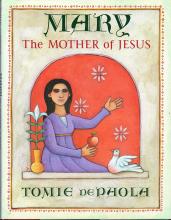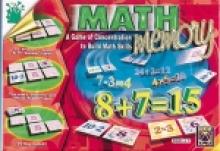No name
Marguerite
What an unexpected and lovely story! Beautifully written and engaging, this short novel has many elements of real life making it so alive. A little boy who is under cancer treatment, a good and kind doctor, and twin sisters who carry crosses with courage. The mystery is well woven, the suspense done just right. Everything is unraveled in time, and we get to know a lot about a beautiful grotto in Iowa. I enjoyed very much the many Catholic references as well. I highly recommend this short novel!
Marguerite
These are reprints from 1947-1955. The pictures and text are very "old-fashioned". For members of a Tridentine Mass community, these can be very handy. All of the references to the Holy Mass and liturgical season refer to the Tridentine rite and the old liturgical calendar.
Marian Apparition Trading Cards from Illuminated Ink
Marian Grotto Kit from Illuminated Ink
Mary, the Mother of Jesus
This is a very nice and very Catholic book about Mary for small children. But don't let its simplicity fool you - there is a great deal for older ones as well. There is a two page "chapter" on each of the following topics: The Presentation of the Child Mary at the Temple, The Betrothal of Joseph and Mary, The Annunciation, The Visitation, The Birth of Jesus, The Presentation of the Boy Jesus in the Temple, The Adoration of the Magi, The Flight into Egypt, The Boy Jesus in the Temple, The Marriage at Cana, The Ministry (of Jesus), Mary's Solitude (the Crucifixion), The Coming of the Holy Spirit, Mary is Taken to Heaven, and a final picture of The Queen of Heaven. Each "chapter" has one or two illustrations - in the Tomie de Paola style of course - a short verse from the Liturgy of the Hours and a simple retelling of the story.
Math 7: A Teaching Textbook
Also includes answer key and 4 CD Set
Purchasers of the original CD edition, which contained several errors in the solutions, can exchange them for corrected CDs. Please contact Teaching Textbooks (customerservice@teachingtextbooks.com).
Math Facts Now!
Advertised as "No Clowns, Trolls or Space Aliens...Just a math program that works!", this program really is just a simple way of drilling math operations. A simple menu allows you to choose your operation, number of problems to solve and how much time to do it in. You can even write in a reward that will be offered when the child achieves at a certain level!
My nine-year-old son really loves this program. He says he likes being able to choose the operation and doing some of his Math without having to write everything out. He basically thinks it's fun time on the computer, but I know that he's learning his math facts too.
Version 2.0 for Windows 2000, ME, XP, Vista and 7.
Website: https://tablefacts.com/
Math Memory
Creative Toys, 1997, 140 study cardboard cards in a standard game box
This is a fun and well-made math version of the classic Memory game. Instead of finding matching pictures, children match equations with answers. (Equation cards and answer cards look different on the backs so you can select one of each.) The answer cards have a sample equation for each operation printed in the corners. Equations are color-coded according to operation so you can easily sort out ones that you aren't currently focusing on (it's also a little difficult to use all the cards at once - there are so many!)
Math Talk
I have long been a fan of the poems for two voices books by Paul Fleischman. This book puts a twist on the idea by covering math topics in poems. It's a really unique and engaging way to memorize a math concept, reciting it as a poem. A poem for two voices is a poem recited by two people where sometimes the same words are said in tandem, sometimes alternately, and sometimes, the speakers speak at the same time saying different things.
Here is a sample of part of a poem from the book: (The first column is the first speaker and the second column, the second - shown smaller than actual size) 
Some of the math concepts in the poems are fairly simple ideas that would pertain to a grammar school student, however most of the ideas are for middle schoolers or high schoolers. There were a few math concepts I had never heard of, such as fractals, (the geometry of nature), Fibonacci numbers (adding the last two numbers in a series to give the next number), and Mobius strips (circular strip with a twist in it).
While you don't learn everything you need to know about the math concepts in the poems, you get an introduction to the idea and the basic or interesting facts. For tessellations, the reader learns that not all figures tessellate; for triangles, the reader learns that the angles in the figure must equal 180 degrees. Some of the accompanying illustrations are also instructive. I could not have visualized the Mobius strip without the drawing of it.
This is a fun way to talk about these concepts. Trying to say the poems as a team takes a lot of concentration and brings a lot of laughs along the way. The book would make a great addition to a living math program or be a nice break from a formal textbook program.
Recommended for grades 4-12










